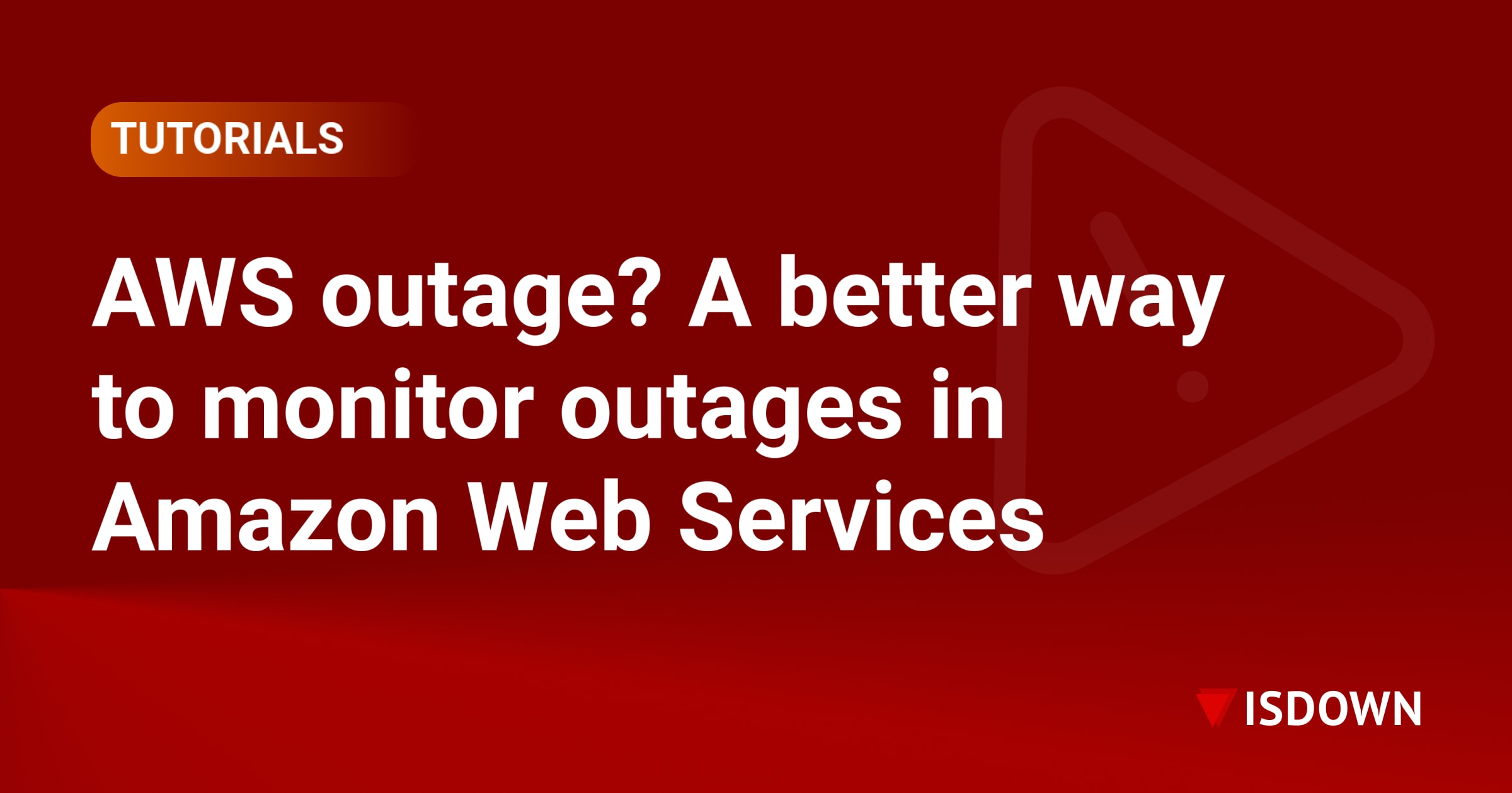Why Use a Status Page Aggregator?
Managing multiple vendor dependencies has become a critical challenge for modern businesses. When your operations rely on dozens of third-party services, tracking their status individually becomes inefficient and risky. A status page aggregator solves this problem by consolidating all vendor status information into a single dashboard.
The Problem with Manual Status Monitoring
Most companies depend on 20-50 external services for their daily operations. These include cloud providers, payment processors, communication tools, analytics platforms, and API services. Each vendor typically maintains its own status page, creating several challenges:
- Information overload: Checking 30+ status pages manually is time-consuming and prone to human error
- Delayed incident detection: Critical outages can go unnoticed for hours without centralized monitoring
- Inconsistent formats: Every vendor presents status information differently, making quick assessment difficult
- Alert fatigue: Managing individual notifications from multiple sources leads to missed critical updates
Key Benefits of Status Page Aggregators
1. Centralized Visibility
A status page aggregator provides a unified dashboard showing all your vendor statuses at a glance. Instead of bookmarking dozens of pages, your team accesses one location for comprehensive visibility. This centralization dramatically reduces the time needed to assess your overall operational health.
2. Faster Incident Response
When vendor issues arise, every minute counts. Aggregators enable faster detection and response by:
- Providing real-time updates from all monitored services
- Sending consolidated alerts through your preferred channels
- Showing historical patterns to identify recurring issues
- Enabling quick correlation between multiple vendor incidents
This improved response time directly impacts your ability to reduce downtime and maintain service quality.
3. Reduced Alert Noise
Intelligent aggregators filter and prioritize notifications based on your specific needs. Rather than receiving every minor update from every vendor, you get actionable alerts about issues that actually affect your operations. This targeted approach prevents alert fatigue while ensuring critical incidents never slip through.
4. Better Vendor Management
Aggregated data provides valuable insights for vendor relationships:
- Performance tracking: Compare uptime and reliability across similar services
- SLA validation: Verify vendors meet their contractual obligations
- Risk assessment: Identify vendors with frequent issues
- Budget justification: Make data-driven decisions about vendor renewals
Who Benefits from Status Page Aggregators?
DevOps and SRE Teams
Engineering teams use aggregators to maintain system reliability. By monitoring all dependencies from one location, they can quickly identify root causes during incidents and coordinate responses more effectively.
IT Service Desks
Support teams need immediate answers when users report issues. Aggregators help them quickly determine whether problems stem from internal systems or vendor outages, enabling accurate communication with affected users.
Business Continuity Managers
Risk management professionals use aggregated status data to maintain operational resilience. They can identify single points of failure, plan redundancies, and ensure critical business functions remain protected.
Customer Success Teams
When serving enterprise clients, customer success managers need visibility into all services affecting their accounts. Aggregators help them proactively communicate about potential impacts and maintain trust.
Essential Features to Look For
When evaluating status page aggregators, consider these critical capabilities:
- Wide vendor coverage: Ensure the platform monitors all your key dependencies
- Custom monitoring: Ability to add private or internal status pages
- Flexible alerting: Multiple notification channels and customizable thresholds
- API access: Integration with your existing monitoring and incident management tools
- Historical data: Long-term storage for trend analysis and reporting
- Team collaboration: Shared dashboards and role-based access controls
Implementation Best Practices
Successful aggregator deployment requires thoughtful planning:
Start with Critical Dependencies
Begin by monitoring your most critical vendors. Focus on services that directly impact customer experience or revenue generation. Gradually expand coverage as your team becomes comfortable with the platform.
Define Alert Priorities
Not all vendor issues require immediate attention. Establish clear criteria for different alert levels based on business impact. This prevents unnecessary disruptions while ensuring critical issues receive proper attention.
Integrate with Existing Workflows
Connect your aggregator to existing incident management processes. Whether through API integrations or webhook notifications, ensure vendor status information flows seamlessly into your established procedures. This integration is crucial for effective downtime communication.
Regular Review and Optimization
Monitor aggregator effectiveness through regular reviews. Analyze which alerts proved valuable, identify gaps in coverage, and adjust configurations based on evolving business needs.
Making the Business Case
Justifying investment in a status page aggregator becomes straightforward when you consider the costs of manual monitoring:
- Time savings: Eliminate hours spent checking individual status pages
- Incident reduction: Faster detection prevents minor issues from escalating
- Improved productivity: Teams focus on core responsibilities instead of vendor monitoring
- Enhanced reputation: Proactive communication maintains customer trust
Choosing the Right Solution
Several factors influence aggregator selection:
- Scale requirements: Number of vendors and users needing access
- Integration needs: Compatibility with your tech stack
- Budget constraints: Balance features against available resources
- Support quality: Vendor responsiveness and expertise
Platforms like IsDown offer comprehensive aggregation capabilities designed for modern teams, combining extensive vendor coverage with intuitive interfaces and powerful alerting features.
Conclusion
Status page aggregators have evolved from nice-to-have tools to essential infrastructure for businesses managing complex vendor ecosystems. By centralizing monitoring, streamlining alerts, and providing actionable insights, they enable teams to maintain operational excellence despite growing dependencies. The investment in proper aggregation pays dividends through reduced incidents, faster responses, and improved vendor relationships.
Frequently Asked Questions
What exactly does a status page aggregator do?
A status page aggregator monitors multiple vendor status pages simultaneously and consolidates all the information into a single dashboard. It automatically checks for updates, sends alerts when issues arise, and provides historical data about vendor performance. This eliminates the need to manually check dozens of individual status pages.
How much does a status page aggregator typically cost?
Pricing varies based on features and scale, typically ranging from $50-500 per month. Basic plans cover essential monitoring and alerting for small teams, while enterprise solutions include advanced features like API access, custom integrations, and dedicated support. Most providers offer free trials to evaluate fit before committing.
Can I monitor internal or private status pages?
Yes, most modern aggregators support monitoring private status pages through various methods. These include API authentication, custom webhooks, or RSS feed monitoring. Some platforms also allow you to create manual entries for services without public status pages.
How quickly do aggregators detect vendor issues?
Detection speed depends on the aggregator's polling frequency and the vendor's update speed. Leading platforms check status pages every 1-5 minutes and can detect changes within seconds of publication. Real-time monitoring ensures you're notified of issues as quickly as the vendor reports them.
What's the difference between a status page aggregator and general monitoring tools?
Status page aggregators specifically focus on collecting and interpreting vendor-published status information, while general monitoring tools typically check service availability through direct testing. Aggregators provide official vendor communications and planned maintenance notices that monitoring tools might miss. Many teams use both for comprehensive coverage.
How many vendors should I monitor before needing an aggregator?
Most teams find aggregators valuable when monitoring 5-10+ vendors, though the exact threshold depends on criticality. If you spend more than 30 minutes weekly checking status pages or have missed important vendor incidents, an aggregator likely provides positive ROI regardless of vendor count.
 Nuno Tomas
Founder of IsDown
Nuno Tomas
Founder of IsDown
The Status Page Aggregator with Early Outage Detection
Unified vendor dashboard
Early Outage Detection
Stop the Support Flood
Related articles
Never again lose time looking in the wrong place
14-day free trial · No credit card required · No code required




